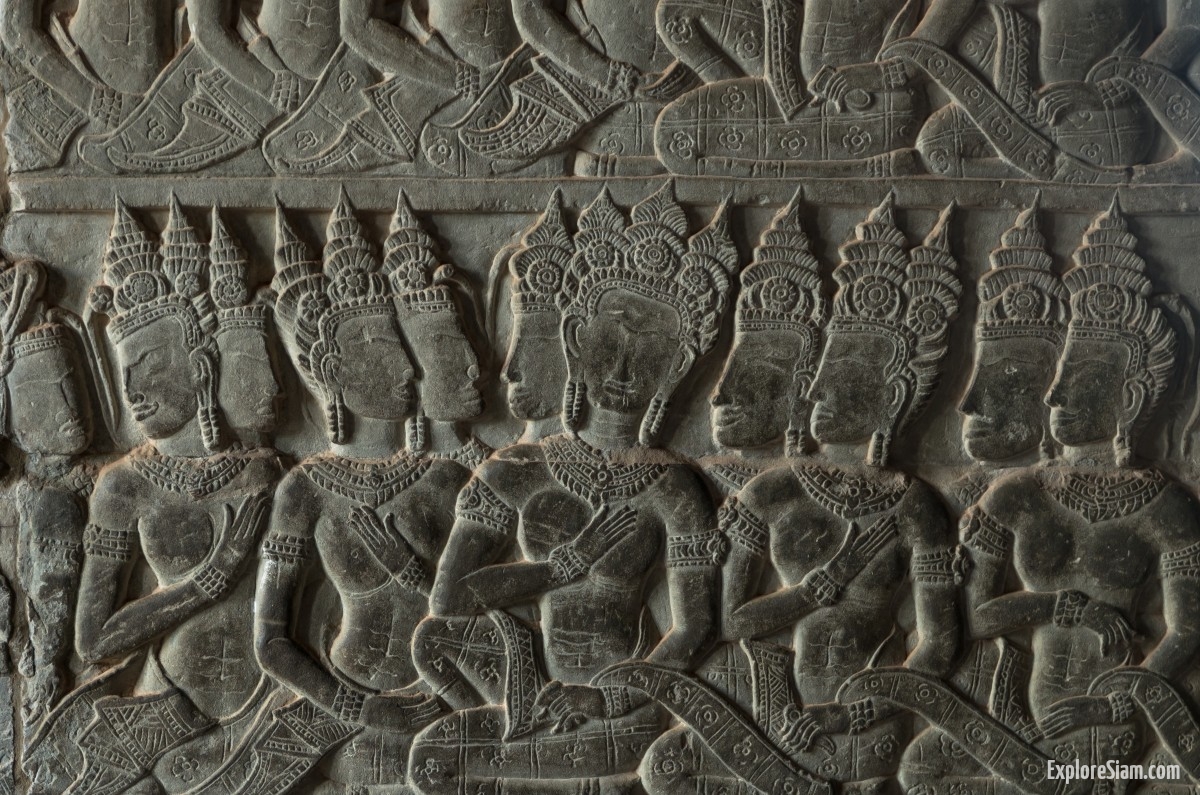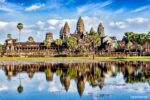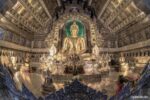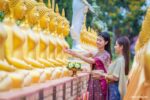Nestled in the heart of Southeast Asia lies a land rich in history, culture, and natural beauty — Thailand, once known as Siam. This enchanting kingdom has a past that stretches back thousands of years, to a time when early civilizations began to take root in its fertile plains and lush jungles. Ancient Siam, often referred to as the cradle of Thai civilization, is a testament to the resilience and ingenuity of its people. This article delves into the history, culture, and archaeological wonders of this remarkable land, offering a glimpse into the origins of modern Thailand.
The Dawn of Civilization
The story of Ancient Siam begins in the prehistoric era, around 6,000 years ago. The earliest inhabitants of this region were hunter-gatherers who gradually transitioned to settled agricultural communities. Archaeological evidence from sites such as Ban Chiang in northeastern Thailand reveals that these early settlers cultivated rice, domesticated animals, and crafted intricate pottery. Ban Chiang is particularly significant as it provides some of the earliest evidence of bronze metallurgy in Southeast Asia, dating back to around 3,000 BCE.
The Rise of City-States
As agricultural techniques improved and populations grew, small city-states began to emerge across the landscape of Ancient Siam. These city-states, often centered around river valleys and trade routes, developed their own unique cultures and governance structures. One of the most notable of these early city-states was Dvaravati, which flourished between the 6th and 11th centuries CE. Located in the Chao Phraya River basin, Dvaravati is known for its impressive Buddhist monuments, including the great stupa at Nakhon Pathom, one of the oldest and largest Buddhist structures in Thailand.
Dvaravati’s influence extended far beyond its borders, as it played a crucial role in the spread of Theravada Buddhism throughout the region. The city-state’s rulers embraced Buddhism as the state religion, commissioning the construction of numerous temples and monasteries. These religious centers became hubs of learning and cultural exchange, attracting scholars and pilgrims from across Asia.
The Khmer Empire and Angkor Wat
The Khmer Empire, based in present-day Cambodia, exerted a significant influence over Ancient Siam during the 9th to 13th centuries CE. The Khmers established a vast and sophisticated empire, with Angkor Wat as its crowning achievement. This magnificent temple complex, dedicated to the Hindu god Vishnu, is one of the largest religious monuments in the world. Its construction required an extraordinary level of architectural and engineering skill, reflecting the zenith of Khmer art and culture.
The influence of the Khmer Empire on Siam is evident in the many temples and structures that dot the landscape, especially in the region of Isan in northeastern Thailand. Temples such as Phimai and Phanom Rung showcase the distinctive Khmer architectural style, characterized by intricate carvings and towering spires. These sites serve as a testament to the cultural and religious exchanges that took place between the Khmer Empire and the people of Ancient Siam.
The Sukhothai and Ayutthaya Kingdoms
The 13th century marked a turning point in the history of Siam, with the rise of the Sukhothai Kingdom. Often regarded as the first true Thai kingdom, Sukhothai was founded by King Ramkhamhaeng in 1238. Under his reign, Sukhothai experienced a golden age of prosperity and cultural development. The kingdom’s capital, also named Sukhothai, became a center of art, religion, and administration.
One of Sukhothai’s most enduring legacies is the development of the Thai script, attributed to King Ramkhamhaeng himself. This script laid the foundation for the modern Thai language and facilitated the recording of religious texts, royal decrees, and literary works. The kingdom’s embrace of Theravada Buddhism also had a profound impact on Thai culture, with the construction of numerous temples and the promotion of Buddhist teachings.
Following the decline of Sukhothai in the late 14th century, the Ayutthaya Kingdom rose to prominence. Founded in 1350 by King Uthong, Ayutthaya quickly grew into one of the most powerful and cosmopolitan cities in Asia. Its strategic location at the confluence of three rivers made it a major trading hub, attracting merchants from as far afield as Europe, Persia, and China.
Ayutthaya’s wealth and influence are reflected in its grand palaces, temples, and fortifications. The city’s unique blend of architectural styles, incorporating elements of Khmer, Sukhothai, and foreign designs, is a testament to its multicultural character. Notable structures include the stunning Wat Chaiwatthanaram, with its towering prang (spire), and the richly decorated Wat Ratchaburana, which houses precious relics and treasures.
The Fall of Ayutthaya and the Birth of Modern Thailand
Ayutthaya’s golden age came to an abrupt end in 1767 when the city was sacked by Burmese invaders. The destruction of Ayutthaya marked a dark chapter in Thai history, but it also paved the way for the rise of a new capital — Bangkok. Under the leadership of King Taksin and later King Rama I, the founders of the Chakri dynasty, Bangkok was established as the new center of Thai power and culture.
The transition from Ayutthaya to Bangkok marked the beginning of modern Thailand. Despite the challenges of rebuilding, the Thai people demonstrated remarkable resilience and adaptability. The new capital quickly flourished, with the construction of grand palaces, temples, and canals that earned it the nickname “Venice of the East.” The legacy of Ancient Siam continued to shape the cultural and spiritual life of the Thai people, as seen in the reverence for historical sites and traditions.
The Enduring Legacy of Ancient Siam
Today, the legacy of Ancient Siam is preserved in the countless historical sites, artifacts, and cultural practices that can be found throughout Thailand. UNESCO World Heritage Sites such as Sukhothai Historical Park and Ayutthaya Historical Park offer visitors a chance to step back in time and explore the ruins of these once-great kingdoms. The intricate sculptures, murals, and architecture of these sites provide invaluable insights into the artistry and beliefs of ancient Thai civilizations.
The influence of Ancient Siam extends beyond its borders, as well. The spread of Theravada Buddhism from Siam to neighboring countries has left an indelible mark on the cultural and religious landscape of Southeast Asia. Festivals, ceremonies, and artistic traditions rooted in Ancient Siamese culture continue to thrive, serving as a bridge between the past and present.
In conclusion, Ancient Siam stands as a testament to the resilience, creativity, and spiritual depth of the Thai people. From the early agricultural communities of Ban Chiang to the grandeur of Ayutthaya and the enduring spirit of Bangkok, the story of Ancient Siam is one of continuous evolution and adaptation. As Thailand moves forward into the future, the rich heritage of its ancient past remains a source of inspiration and pride, reminding us of the timeless beauty and complexity of this remarkable civilization.





